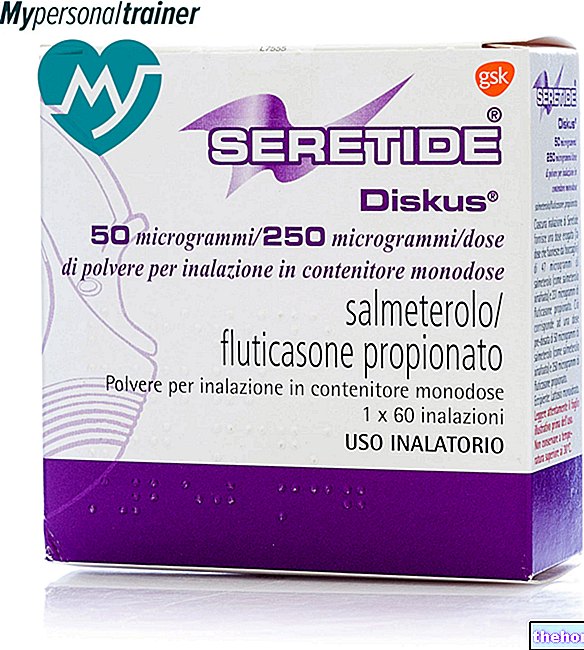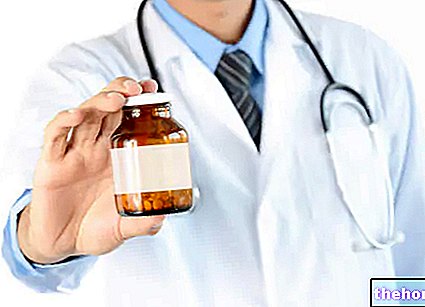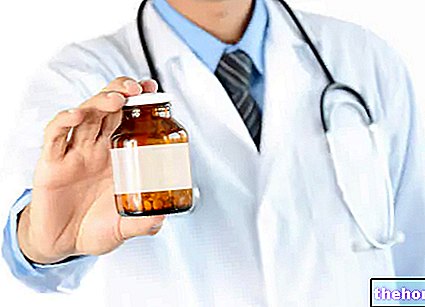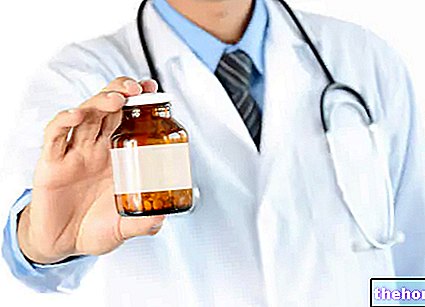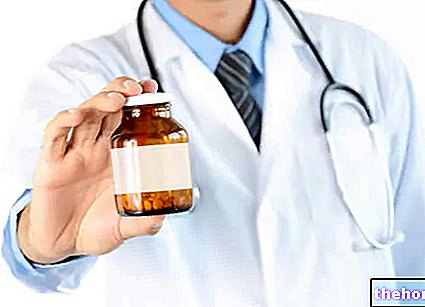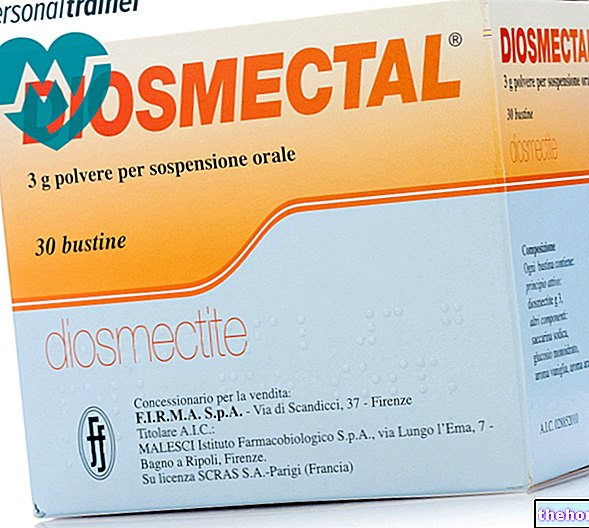Active ingredients: Lidocaine (Lidocaine hydrochloride), Neomycin (Neomycin sulfate), Fluocinolone (Fluocinolone acetonide)
NEFLUAN - Gel tube 10 g
Indications Why is Nefluan used? What is it for?
CATEGORY: other urinary antiseptics and antimicrobials.
THERAPEUTIC INDICATIONS: all endoscopic maneuversContraindications When Nefluan should not be used
previously ascertained individual hypersensitivity to the product or to one or more of its components with particular regard to neomycin and surface anesthetics.
Precautions for use What you need to know before taking Nefluan
avoid application for very long periods or on very large surfaces. NEFLUAN should be used with caution in patients with severely damaged mucous membranes
Interactions Which drugs or foods can modify the effect of Nefluan
propranolol prolongs the plasma half-life of lidocaine and cimetidine may increase its plasma levels.
Warnings It is important to know that:
products for topical application, especially if used for a prolonged time or repeatedly, can give rise to sensitization phenomena. In this case, treatment must be interrupted and appropriate therapy instituted.
Dose, Method and Time of Administration How to use Nefluan: Posology
push NEFLUAN directly into the urethra, squeezing the tube and massaging the posterior urethra at the same time. Apply urethral forceps for a few minutes, after which the desired endourethral maneuvers can be performed. The content of the tube is sufficient to completely fill the urethra, however the dose will vary according to the condition, its intensity and the desired effect. It is advisable to introduce NEFLUAN a few minutes before the operation and repeat the procedure. "application at the end of the maneuver.
Overdose What to do if you have taken too much Nefluan
for a correct use of the product the symptoms of possible overdose are attributable to lidocaine hydrochloride. Treatment is symptomatic. Seizures can be controlled by administering short-acting barbiturates or benzodiazepines.
Side Effects What are the side effects of Nefluan
only with the extremely improper use of NEFLUAN can undesirable systemic effects occur. For lidocaine hydrochloride, these reactions are characterized by neuroexcitatory manifestations or cardiovascular alterations and anaphylactoid symptoms. Topical treatment with neomycin sulphate can cause sensitization reactions. concomitant treatment with aminoglucosides may result in cross-reactions.The indication of NEFLUAN, limited to endoscopic use, (imbalance of the electrolyte balance, mobilization of calcium and phosphorus, hyperglycemia, etc.) clearly reduces the possibility of an onset of the side effects of fluocinolone acetonide.
The patient should report any other undesirable effects to the treating physician or pharmacist.
Expiry and Retention
ATTENTION: do not use after the expiration date indicated on the package.
COMPOSITION: a 10 g tube contains: Lidocaine hydrochloride 0.25 g; Neomycin sulfate 0.05 g; Fluocinolone acetonide 0.0025 g. Excipients: sodium carboxymethylcellulose, glycerin, propylene glycol, sodium citrate, methyl p-hydroxybenzoate, ethyl p-hydroxybenzoate, propyl p-hydroxybenzoate, sodium benzoate, purified water.
PHARMACEUTICAL FORM AND PRESENTATION: water-soluble gel in 10 g tube. In order to facilitate the introduction of the drug and to eliminate the pain that can be caused by the contact of the metal tip of the tube on particularly painful parts, the package is equipped with an extension in non-toxic plastic material to be screwed to the tube itself at the time of the " use.
Source Package Leaflet: AIFA (Italian Medicines Agency). Content published in January 2016. The information present may not be up-to-date.
To have access to the most up-to-date version, it is advisable to access the AIFA (Italian Medicines Agency) website. Disclaimer and useful information.
01.0 NAME OF THE MEDICINAL PRODUCT
NEFLUAN GEL TUBE 10 G
02.0 QUALITATIVE AND QUANTITATIVE COMPOSITION
100 g of product contain:
Lidocaine hydrochloride g 2.50
Neomycin sulphate g 0.50
Fluocinolone acetonide 0.025 g
Excipients with known effects: propylene glycol, methyl p-hydroxybenzoate (E218), ethyl p-hydroxybenzoate (E214), propyl p-hydroxybenzoate (E216), sodium benzoate (E211).
For the full list of excipients, see section 6.1.
03.0 PHARMACEUTICAL FORM
Water-soluble gel.
04.0 CLINICAL INFORMATION
04.1 Therapeutic indications
Endoscopic and instrumental urological maneuvers.
04.2 Posology and method of administration
Push NEFLUAN directly into the urethra, squeezing the tube and massaging the posterior urethra at the same time. Apply urethral forceps for a few minutes, after which the desired endourethral maneuvers can be performed. The content of the tube is sufficient to completely fill the urethra, however the dose will vary according to the condition, its intensity and the desired effect. It is advisable to introduce NEFLUAN a few minutes before the operation and repeat the procedure. "application at the end of the maneuver.
Since NEFLUAN is a water-soluble gel, it does not tarnish the lenses of the instruments and, as it does not contain grease, it does not deteriorate the rubber.
04.3 Contraindications
Hypersensitivity to the active substances or to any of the excipients listed in section 6.1.
04.4 Special warnings and appropriate precautions for use
Products for topical application, especially if used for a prolonged time or repeatedly, can give rise to sensitization phenomena. In this case, treatment must be interrupted and appropriate therapy instituted.
As with any other preparation to be applied on the mucous membranes, any reactions or complications are more easily avoided by using the minimum effective dosages. In any case, the application for very long periods or on very large surfaces should be avoided.
Pay attention to children, the elderly and seriously ill patients.
NEFLUAN should be used with caution in patients with severely damaged mucous membranes.
Important information about some of the ingredients
NEFLUAN contains sodium benzoate (E211): slightly irritating to the skin, eyes and mucous membranes.
NEFLUAN contains methyl p-hydroxybenzoate (E218), ethyl p-hydroxybenzoate (E214), propyl p-hydroxybenzoate (E216): they can cause allergic reactions (even delayed) and bronchospasm.
NEFLUAN contains propylene glycol: may cause skin irritation.
04.5 Interactions with other medicinal products and other forms of interaction
Propranolol prolongs the plasma half-life of lidocaine and cimetidine may increase its plasma levels.
04.6 Pregnancy and lactation
Studies in rats and rabbits did not reveal any risk to the fetus. However, its safety in men has not been established. This should be borne in mind before administration to pregnant women, particularly in the early stages.
04.7 Effects on ability to drive and use machines
Nefluan has no or negligible influence on the ability to drive or use machines.
04.8 Undesirable effects
The frequency of the possible side effects listed is defined using the following convention: Very common (≥1 / 10), Common (≥1 / 100,
Reporting of suspected adverse reactions
Reporting of suspected adverse reactions occurring after authorization of the medicinal product is important as it allows continuous monitoring of the benefit / risk balance of the medicinal product. Healthcare professionals are asked to report any suspected adverse reactions via the national reporting system. "address https://www.aifa.gov.it/content/segnalazioni-reazioni-avverse.
04.9 Overdose
For a correct use of the product the symptoms of possible overdose are attributable to lidocaine hydrochloride. These symptoms are characterized by neuroexcitatory manifestations (tremors, convulsions followed by depression, respiratory failure and coma) and by cardiovascular alterations with hypotension and bradycardia.
Treatment is symptomatic. Seizures can be controlled by administering short-acting barbiturates or benzodiazepines.
05.0 PHARMACOLOGICAL PROPERTIES
05.1 Pharmacodynamic properties
Pharmacotherapeutic group: local anesthetics of the amide type, combinations.
ATC code: N01BB52.
NEFLUAN has a local anesthetic, anti-inflammatory and antibacterial action. The local anesthetic action is due to lidocaine hydrochloride and is carried out by blocking the free sensitive nerve endings present on the mucous membranes. Neomycin sulphate has antimicrobial activity against numerous germs, both Gram + and Gram-. Fluocinolone acetonide is a synthetic glycocorticoid that presents anti-inflammatory activity applied topically. The presence of fluocinolone acetonide does not modify the antibacterial activity of neomycin.
05.2 "Pharmacokinetic properties
Lidocaine hydrochloride is absorbed by the mucous membranes and is metabolised in the liver via deethylation to monoethylglycinxylidide and subsequent hydrolysis by amidases. Less than 10% of the absorbed dose is excreted unchanged in the urine.
Neomycin sulphate does not appear to be absorbed in the mucous membranes. In case of absorption (for example if applied to injured surfaces) it is rapidly excreted in the urine.
Fluocinolone acetonide is typically not absorbed in sufficient quantities to give systemic effects unless administered to injured surfaces.
05.3 Preclinical safety data
NEFLUAN demonstrated good local and general tolerability, documented both by the "absence of irritative manifestations affecting the conjunctival mucous membranes of the rabbit and rat and the skin of the rat and guinea pig, and by the lack of appreciable effects on the growth curve in the" animal and blood crasis.
06.0 PHARMACEUTICAL INFORMATION
06.1 Excipients
Sodium carboxymethylcellulose, glycerin, propylene glycol, sodium citrate, methyl p-hydroxybenzoate (E218), ethyl p-hydroxybenzoate (E214), propyl p-hydroxybenzoate (E216), sodium benzoate (E211), purified water.
06.2 Incompatibility
Lidocaine hydrochloride causes the precipitation of amphotericin. In solution, lidocaine hydrochloride (2 g / l) forms a precipitate when mixed with sodium methoxytone (2 g / l) and a crystalline precipitate with sodium sulfadiazine (4 g / l) .
Neomycin sulfate solution can form a precipitate with some anionic substances, including sodium lauryl sulfate. Neomycin sulfate is also incompatible with sodium cephalothin and sodium novobiocin.
06.3 Period of validity
2 years in intact packaging.
06.4 Special precautions for storage
Do not store above 25 ° C.
06.5 Nature of the immediate packaging and contents of the package
Aluminum tube internally coated with a plastic film with closed tip and screw cap, contained in a cardboard box. Each tube contains 10 g of gel.
In order to facilitate the introduction of the drug and to eliminate the pain that can be caused by the contact of the metal tip of the tube on particularly painful parts, the package is equipped with an extension in non-toxic plastic material to be screwed to the tube itself at the time of the " use.
06.6 Instructions for use and handling
Unused medicine and wastes derived from this medicine must be disposed of in accordance with local regulations.
07.0 MARKETING AUTHORIZATION HOLDER
L. Molteni & C. dei F.lli Alitti Società di Operazione S.p.A., S.S. 67, Loc. Granatieri, Scandicci (FI).
08.0 MARKETING AUTHORIZATION NUMBER
A.I.C. n ° 023789011
09.0 DATE OF FIRST AUTHORIZATION OR RENEWAL OF THE AUTHORIZATION
December 1978 / June 2010
10.0 DATE OF REVISION OF THE TEXT
January 2016

